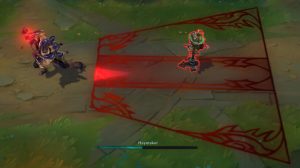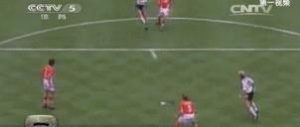动词的分类超具体剖析,太太太全了,坚决保藏
一. 动词概说
1. 动词(verb)是表现举措或形态的词。
1)表现举措:swim游泳;push推
2)表现形态:have有;be是
2. 英语动词偶尔态、语态、语气等情势上的厘革。
二. 动词的分类
1. 谓语动词和非谓语动词
从对否能充任句子中的谓语来看,动词有谓语动词和非谓语动词两大类。
1) 谓语动词
有人称和数的厘革。如:
Heisa tractor driver.他是一个拖沓机手。
Factsaremore eloquent than words.内幕胜于雄辩。
Wehavefriends all over the world.我们的伙伴遍天下。
An applefallsby the force of gravitation.地心吸力使苹果落地。
2) 非谓语动词
非谓语动词有动词不定式、动名词和分词三种,在句子里都不克不及单独作谓语,没有人称和数的厘革。如:
I am pleasedto meet you.我很兴奋与你相识。(动词不定式)
Smokingis harmful to the health.吸烟对肢体不利。(动名词)
I heard themsingingthe Internationale。我闻声他们唱《国际歌》。(如今分词)
Spokenwords are often more powerful than writing.言语屡屡比笔墨更上心。(已往分词)
2. 实义动词、结合动词、模样形状动词和助动词
从其涵义来分,动词有实义动词(notional verb),结合动词(link verb),模样形状动词(modal verb)和助动词(auxiliary verb)四类。
1) 实义动词
实义动词有完全的词义,并能独立作谓语动词。如:
The sunshonebrightly this morning.今天早上阳光光辉。
Helikesto go for a long walk on sundays.他喜好星期日出去作长距离安步。
Wehavea big TV set in the club.我们俱乐部有台大电视机。
2) 结合动词
结合动词在句中作谓语动词,后方跟表语。英语结合动词有be(是),seem(仿佛),look(看来),keep(坚持),become(变成),get(变得),grow(变得),feel(感受),turn(变得,变成),appear(显得),remain(仍旧是)等。如:
Itisnever too late to mend.改正不嫌晚。
Itwasa close game.那场球赛比分很接近。
The children in this nurserylookvery healthy.这个托儿所的孩子看起来都十分康健。
Keepquiet,please!请宁静!,
The tape recorderseemsall right.这台灌音机仿佛没有弊端。
Later hebecamea doctor.他厥后成为一名医生。
The problemremainedunsolved until last year.成绩到客岁才处理。
[注一]底下句子中的come和go也是结合动词。如:
The old man’s dream has come true.这位白叟的抱负完成了。
Something has gone wrong with the truck.卡车出弊端了。
[注二] 有些结合动词如seem, appear等后方常跟to be。如:
The new text seens to be easy,but actually it is rather difficult.这篇新课文仿佛很容易,但是相当难。
She appears to be the girl’s sister.她仿佛是那女孩的姐姐。
3) 模样形状动词
模样形状动词有can (能),may (可以,约莫),must(必需)等,表现才能、职责、必要、推测等语言人的语气或模样形状。模样形状动词只能和主要动词一同构成谓语动词。
4) 助动词
助动词有shall,will,have,be,should,wonld, do等。它们只能和主要动词一同构成种种时态、语态、语气等动词情势,以及否定和疑问等布局中的谓语动词。
3. 及物动词和不及物动词
从对否能直接跟宾语来分,实义动词又有及物动词和不及物动词两类。
1) 及物动词
后方必需跟宾语意义才完备的实义动词,叫做及物动词(transitive verb)。如:
Ibelievethat the committee willconsiderour suggestion.我信赖委员会将会思索我们的发起。
“How long can Ikeepthe book ?”Harry asked.哈里问:”这本书我可以借多久?”
Dr. Bethunesetus a good example. 白求恩医生给我们树立了好典范。
Crude oilcontainsmany useful substances.原油含有很多有效的物质。
2) 不及物动词
本身意义完备后方不须跟宾语的实义动词,叫做不及物动词(intransitive verb)。如:
Birdsfly.鸟会飞。
Ithappenedin June 1932.这件事产生于一九三;年六月。
My watchstopped.我的表停了。
Shespokeat the meeting yesterday evening. 她在昨天夜晚的会上发了言。
3) 兼作及物动词和不及物动词
英语里有不少实义动词可以兼作及物动词和不及物动词。如此的动词又有两种不同的情况:
a) 兼作及物动词和不及物动词时,意义安定。试比力:
Shall I begin at once?我可以立刻开头吗?(begin作不及物动词)
She began working as a librarian after she left school.她毕业后当图书馆办理员。(began作及物动词)
When did they leave Chicago?他们是什么时分分开芝加哥的?(leave 作及物动词)
They left last week. 他们是上周分开的。(left 作不及物动词)
b) 兼作及物动词和不及物动词时,偶尔意义不尽相反。如:
Wash your hands before meals.饭前要洗手。
Does this cloth wash well? 这布经得起洗吗?
4) 与汉语的比力
偶尔英语动词的及物和不及物的用法,与汉语的用法不一样,请注意下列两种情况:
a)有的动词在英语里只能用作不及物动词,而汉语则可用作及物动词,如arrive抵达,agree赞同,1isten听。英语里这些动词后方常接介词。如:
We arrived at the railway station at noon.我们于中午抵达火车站。(at不克不及省去)(比力:We reached the railway station at noon.)
Everybody listened to the lecture with great interest.每一局部都很有兴致地听授课。(to不成省去)(比力:We all heard the lecture.)
Do they agree to the plan?他们赞同这个方案吗?(to不成省去)
b)有的动词在英语里能用作及物动词,而在汉语里则不克不及用作及物动词,如serve为…办事。
Our children are taught to serve the people wholeheartedly.我们的儿童被教以一心一意为人民办事。
4. 短语动词
动词常和某些其他词类用在一同,构成安稳词组,构成所谓短语动词(phrasal verb)。和动词一样,短语动词也可分为及物和不及物两种。短语动词可以作为一个全体对待,同寻常动词一样使用。
1) 动词 + 介词
这类短语动词用作及物动词,后方须跟宾语。如:
The small boy insisted on going with his parents.那男孩坚持要跟爸妈一同去。
Do you often listen to broadcasts in English? 你常听英语广播吗?
Look at the children. Aren’t they lovely?看着这些孩子们。他们何等心爱呀!
We stand for self-reliance.我们是主张独立重生的。
这一类的短语动词另有很多,如depend on (upon)(依*),wait on (伺候),look for (寻觅),deal with(对待),look after(照料),wait for(等候)等。
2) 动词+副词
这类短语动词有的用作及物动词,有的用作不及物动词。如:
I always get up as soon as the bell rings. 我总是一打铃就起床。(不及物)
Look out,there’s a car coming! 把稳,来汽车了!(不及物)
Have you handed in your exercises already? 你以前交练习了吗?(及物)
Please don’t forget to put on your coat;it’s cold outside.请不要忘记穿外套,外表很冷。(及物)
这一类的短语动词另有很多,及物如 put out (扑灭), eat up (吃光),putdown(放下);不及物如set off (动身),come up(走近),go on(持续)。
[注一]“动词+副词”这类短语动词和外表第一类”动词 + 介词”的不同之处在于:”动词+ 介词”用作及物动词,后方须跟宾语。”动词 + 副词”则有的及物,有的不及物;用作及物动词而宾语为人称代词或本身代词时,副词屡屡放在宾语之后。如:
Please wake me up at five tomorrow.请在明天早上五点叫醒我。
If you have done your exercises,please hand them in.假如你们练习做完了请交来。
She doesn’t normally behave like that;she’s putting it on.她通常并不云云体现,她是装出来的。
[注二]这类短语动词有不少可兼作及物和不及物动词用。如:
He took off his hat when he entered the office.
他进办公室后脱下帽子。(及物)
The plane took off at seven sharp.
飞机在七点整腾飞。(不及物)
Charlie rang up Neil to ask about the time of the meeting.
查理打电话给尼尔问议会的时间。(及物)
If you can’t come,please ring up and let us know.你如来不了,请来电话报告我们一声。(不及物)
3) 动词 + 副词 + 介词
短语动词”动词 + 副词”之后有的可以再加一个介词,构成另一种短语动词。这类短语动词用作及物动词。如:
Do not give up hope. We must go on with the experiment
不要扫兴。我们必需持续实验。(go on with持续)
He came up to me.他走到我跟前。(come up to走近)
这类短语动词另有:look down upon(看不起),do away with(去掉),put up with(忍受)等。
4) 动词 + 名词 + 介词
这类短语动词也是及物的。如
He shook hands with all the guests at the banquet.他在宴会上和宾客逐一握手。
Young pioneers often come to the Children’s Palace to take part in after=school activities. 少先队员常常到少年宫分开场课外活动。
Pay attention to the temperature of the stored rice.注意货仓里的稻谷的温度。
Her job is taking care of the babies.她的事情是照顾婴儿。
这一类短语动词另有:put an end to (完毕),take notice of (注意),catch hold of (捉住),lose sight of(看不见),make use of(使用)等













